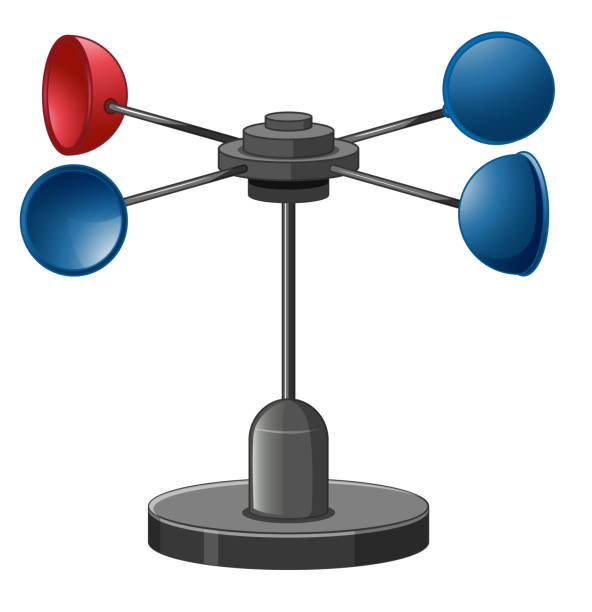Leading Features to Look for in a Reliable Anemometer for Accurate Wind Measurement
Leading Features to Look for in a Reliable Anemometer for Accurate Wind Measurement
Blog Article
All You Required to Know Concerning Anemometers: Just How They Function, Why They Matter, and Where to Make use of Them
Anemometers, though usually forgotten in the world of clinical instruments, play a critical role in various areas, using beneficial understandings into wind speed and air flow patterns. Understanding the mechanics behind these gadgets is vital for any individual seeking to harness the power of this information. From meteorologists tracking climate patterns to engineers designing structures with wind tons in mind, the applications of anemometers are far-ranging and varied. As we explore the ins and outs of anemometer technology, we will certainly reveal the internal operations of these tools, their relevance, and the key considerations when choosing the right anemometer for particular applications.

Anemometer Essentials
An important instrument made use of to gauge wind speed and instructions, the anemometer plays an important function in weather forecasting and various markets. An anemometer generally consists of 3 or 4 mugs that revolve in the wind, a vane that aims right into the wind, and sensing units to track the activities or rotations. By calculating the rotations or activities over a certain period, the anemometer can determine wind rate. The vane aids figure out wind instructions by directing right into the wind, offering useful data for weather forecasting, aeronautics, maritime procedures, environmental surveillance, and wind power applications.
There are various types of anemometers readily available, consisting of mug anemometers, vane anemometers, hot-wire anemometers, and sonic anemometers, each with its special features and applications. Cup anemometers are typically used for fundamental wind rate dimensions, while vane anemometers are liked for directional measurements.
Principles of Anemometer Procedure
Structure on the fundamental understanding of anemometer fundamentals, the principles of anemometer operation elucidate the auto mechanics behind wind speed and instructions measurements. Mug anemometers, for circumstances, have 3 or even more mugs that catch the wind, causing them to rotate quicker as the wind rate boosts. Hot-wire anemometers rely on a warmed wire that cools down as wind passes over it, with the price of cooling identifying the wind speed.
Significance of Anemometers
The significance of anemometers in meteorology and various industries can not be overstated. Anemometers play a vital role in gauging wind rate and direction, providing crucial information for climate projecting, environment studies, ecological monitoring, and aeronautics procedures. Meteorologists count on anemometers to collect precise wind information, helping them recognize climate patterns, forecast storms, and problem timely warnings to the general public. In industries such as building, agriculture, renewable resource, and maritime operations, anemometers are used to maximize procedures, make certain safety and security, and enhance efficiency. Wind ranch drivers make use of anemometers to examine wind problems and make best use of electrical energy manufacturing from wind turbines. In the maritime sector, visit homepage anemometers aid ship navigating by providing real-time wind details to captains, helping them make informed decisions to ensure secure voyages. In general, anemometers are vital tools that contribute considerably to security, effectiveness, and notified decision-making in weather forecasting and a vast array of markets.
Applications Across Numerous Industries
In the renewable power market, anemometers play an essential function in examining wind conditions for wind farm positionings, making sure ideal power manufacturing. Industries like construction and mining utilize anemometers to check wind rates, crucial for security procedures, especially when functioning at heights or in open-pit mines where strong winds can posture hazards. In farming, anemometers help farmers in managing plant splashing by providing real-time information on wind speed to prevent drift.

Choosing the Right Anemometer for Your Demands
Choosing the suitable anemometer tailored to your particular demands is important for acquiring exact wind speed and direction measurements. When choosing an anemometer, consider variables such as the designated application, needed measurement array, environmental conditions, and wanted functions. For general functions, a cup anemometer is appropriate for measuring wind rate, while a vane anemometer supplies wind instructions information. Hot-wire anemometers are perfect for low airspeed measurements, and ultrasonic anemometers provide high precision and resilience.

Verdict
In final thought, anemometers play a crucial function in determining wind rate and instructions across different industries. Comprehending the concepts of anemometer operation is necessary for choosing the best device for certain needs. From weather forecasting to aviation, anemometers are crucial devices for accumulating precise information and ensuring safety in different applications. It is very important to take into consideration the significance of anemometers in order to make educated choices when selecting the most appropriate device for measuring wind problems.
There are numerous types of anemometers readily available, consisting of cup anemometers, vane anemometers, hot-wire anemometers, and sonic anemometers, each with its special functions and applications. Mug anemometers are generally used for standard wind rate dimensions, while vane anemometers are favored for directional dimensions. Hot-wire anemometers are ideal for low airspeeds, and sonic anemometers are suitable for high-precision measurements in study and commercial setups.Building on the fundamental understanding of anemometer basics, the concepts of anemometer procedure illuminate the mechanics behind wind rate and instructions dimensions. For general objectives, a cup anemometer is appropriate for measuring wind speed, while a vane anemometer why not check here provides wind direction information.
Report this page